Day 1 Morning
¡¡
 Dr.
Anthony Atala is the Director of Wake Forest Institute for Regenerative
Medicine and the Chair of Urology at Wake Forest School of Medicine. He is a
practicing surgeon and a researcher in the area of regenerative medicine.
His current work focuses on growing new human cells, tissues and organs. He
is Editor-in-Chief of Stem Cells-Translational Medicine and Therapeutic
Advances in Urology, and serves on the editorial board of 20 journals. He
has received the US Congress funded Christopher Columbus Award, World
Technology Award in Medicine, Samuel Gross Prize, Barringer Medal by the
AAGUS, and Gold Cystoscope award. In 2011 he was elected to the Institute of
Medicine of the National Academy of Sciences. Dr. Atala¡¯s work has been
included twice in Time magazine¡¯s top 10 medical breakthroughs of the year.
Dr. Atala is a member of the American Urological Association, American
College of Surgeons, numerous international advisory boards, and is a
founding member of the Tissue Engineering and Regenerative Medicine
International Society. He was featured in U.S. News & World Report as one of
14 Pioneers of Medical Progress in the 21st Century. Over 10 applications of
technologies developed in his laboratory have been used clinically. He is
the editor of 12 books, has published over 400 journal articles, and has
applied for or received over 200 national and international patents.
Dr.
Anthony Atala is the Director of Wake Forest Institute for Regenerative
Medicine and the Chair of Urology at Wake Forest School of Medicine. He is a
practicing surgeon and a researcher in the area of regenerative medicine.
His current work focuses on growing new human cells, tissues and organs. He
is Editor-in-Chief of Stem Cells-Translational Medicine and Therapeutic
Advances in Urology, and serves on the editorial board of 20 journals. He
has received the US Congress funded Christopher Columbus Award, World
Technology Award in Medicine, Samuel Gross Prize, Barringer Medal by the
AAGUS, and Gold Cystoscope award. In 2011 he was elected to the Institute of
Medicine of the National Academy of Sciences. Dr. Atala¡¯s work has been
included twice in Time magazine¡¯s top 10 medical breakthroughs of the year.
Dr. Atala is a member of the American Urological Association, American
College of Surgeons, numerous international advisory boards, and is a
founding member of the Tissue Engineering and Regenerative Medicine
International Society. He was featured in U.S. News & World Report as one of
14 Pioneers of Medical Progress in the 21st Century. Over 10 applications of
technologies developed in his laboratory have been used clinically. He is
the editor of 12 books, has published over 400 journal articles, and has
applied for or received over 200 national and international patents.
 Dr.
Hollister is a Professor of Biomedical Engineering and Mechanical
Engineering at the University of Michigan, where he directs the Scaffold
Tissue Engineering Group (STEG). Dr. Hollister and his collaborators have
designed and developed a variety of medical devices utilizing 3D printing,
an area in which he has worked for 17 years, publishing his first paper in
1997. He and his colleagues first developed an approach for laser sintering
for polycaprolactone in 2004. His general research focuses on the design,
fabrication and evaluation of biomaterial platform systems for tissue
reconstruction. He is a fellow of the American Institute of Biological
Engineering. His work on a bioresorbable tracheal splint along with Dr.
Glenn Green was published in the New England Journal of Medicine in 2013 and
subsequently was given a Popular Mechanics 2013 Breakthrough Innovation
Award. This implantation of this 3D printed device to save the lives of
three children has also been featured on the Today Show, the New Yorker, USA
Today, NPR, Time magazine, Nature, Science, and Popular Mechanics among
other media.
Dr.
Hollister is a Professor of Biomedical Engineering and Mechanical
Engineering at the University of Michigan, where he directs the Scaffold
Tissue Engineering Group (STEG). Dr. Hollister and his collaborators have
designed and developed a variety of medical devices utilizing 3D printing,
an area in which he has worked for 17 years, publishing his first paper in
1997. He and his colleagues first developed an approach for laser sintering
for polycaprolactone in 2004. His general research focuses on the design,
fabrication and evaluation of biomaterial platform systems for tissue
reconstruction. He is a fellow of the American Institute of Biological
Engineering. His work on a bioresorbable tracheal splint along with Dr.
Glenn Green was published in the New England Journal of Medicine in 2013 and
subsequently was given a Popular Mechanics 2013 Breakthrough Innovation
Award. This implantation of this 3D printed device to save the lives of
three children has also been featured on the Today Show, the New Yorker, USA
Today, NPR, Time magazine, Nature, Science, and Popular Mechanics among
other media.
 Jennifer
A. Lewis joined the faculty of the School of Engineering and Applied
Sciences and the Wyss Institute for Biologically Inspired Engineering at
Harvard University in 2013. Prior to joining Harvard, she held a named
professorship and served as Director of the Materials Research Laboratory at
University of Illinois. An innovative pioneer, she leads a vibrant research
group that develops new materials and printing platforms for fabricating
functional, structural, and biological structures and devices. To date, her
research has resulted in more than 30 patents (issued and filed) and 150
papers. She has received numerous awards, including the NSF Presidential
Faculty Fellow Award, the Langmuir Lecture Award from the American Chemical
Society, and the MRS Medal Award. She is a Fellow of the National Academy of
Inventors, the American Academy of Arts and Sciences, the American Ceramic
Society, the American Physical Society, and the Materials Research Society.
Her work on microscale 3D printing was recently highlighted as one of the
¡°10 Breakthrough Technologies¡± by the MIT Technology Review, while her
bioprinting research was named ¡°one of the top 100 science stories¡± by
Discover Magazine. She is a co-founder of two companies, which are
commercializing technology from her lab.
Jennifer
A. Lewis joined the faculty of the School of Engineering and Applied
Sciences and the Wyss Institute for Biologically Inspired Engineering at
Harvard University in 2013. Prior to joining Harvard, she held a named
professorship and served as Director of the Materials Research Laboratory at
University of Illinois. An innovative pioneer, she leads a vibrant research
group that develops new materials and printing platforms for fabricating
functional, structural, and biological structures and devices. To date, her
research has resulted in more than 30 patents (issued and filed) and 150
papers. She has received numerous awards, including the NSF Presidential
Faculty Fellow Award, the Langmuir Lecture Award from the American Chemical
Society, and the MRS Medal Award. She is a Fellow of the National Academy of
Inventors, the American Academy of Arts and Sciences, the American Ceramic
Society, the American Physical Society, and the Materials Research Society.
Her work on microscale 3D printing was recently highlighted as one of the
¡°10 Breakthrough Technologies¡± by the MIT Technology Review, while her
bioprinting research was named ¡°one of the top 100 science stories¡± by
Discover Magazine. She is a co-founder of two companies, which are
commercializing technology from her lab.
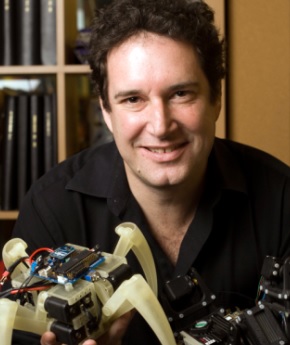 Hod
Lipson is a professor of engineering at Columbia University in New York, and
a co-author of the award-winning bestseller ¡°Fabricated: The New World of 3D
printing¡± (translated to 7 languages). His work on self-aware and
self-replicating robots, food printing, and bio-printing has received
widespread media coverage including The New York Times, The Wall Street
Journal, Newsweek, Time, CNN, and the National Public Radio. Lipson has
co-authored over 200 technical papers and speaks frequently at high-profile
venues such as TED and the US National Academies. Hod directs the Creative
Machines Lab, which pioneers new ways to make machines that create, and
machines that are creative. For more information visit http://lipson.mae.cornell.edu.
Hod
Lipson is a professor of engineering at Columbia University in New York, and
a co-author of the award-winning bestseller ¡°Fabricated: The New World of 3D
printing¡± (translated to 7 languages). His work on self-aware and
self-replicating robots, food printing, and bio-printing has received
widespread media coverage including The New York Times, The Wall Street
Journal, Newsweek, Time, CNN, and the National Public Radio. Lipson has
co-authored over 200 technical papers and speaks frequently at high-profile
venues such as TED and the US National Academies. Hod directs the Creative
Machines Lab, which pioneers new ways to make machines that create, and
machines that are creative. For more information visit http://lipson.mae.cornell.edu.
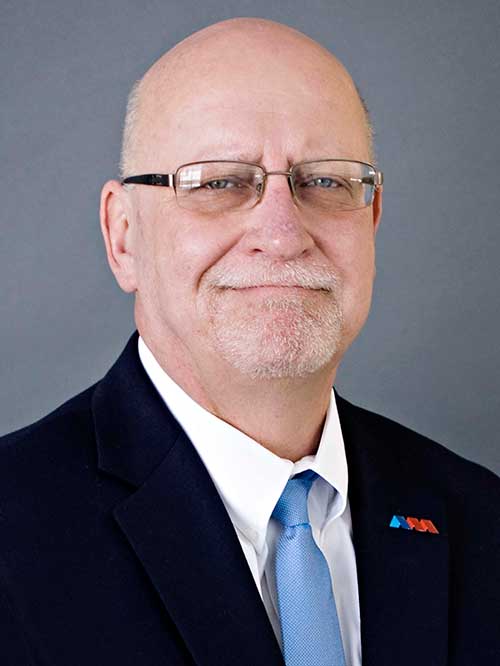 Mr.
Resnick joined NCDMM in September 2008 as Vice President, Chief Technology
Officer with over 35 years of manufacturing experience. He assumed President
& Executive Director in May 2011 and led the NCDMM to winning the
competitive National Additive Manufacturing Innovation Institute contract.
Upon award, he also assumed the role of Acting Director of America Makes
(formerly known as NAMII) until February 2013 when the new director was
appointed. Prior to joining NCDMM, Mr. Resnick served as Chief Technology
Officer for both The Ex One Corporation and Extrude Hone where he helped
establish Extrude Hone and Ex One as leaders in advanced manufacturing. He
holds several patents in manufacturing processes and metrology.Mr.
Resnickserves on the Board of Directors of SME and is a Fellow and the
member of SME¡¯s International Awards and Recognition Committee. In 2010, Mr.
Resnick received the NAMRI/SME ¡°Outstanding Lifetime Service Award.¡±:He also
serves on the Board of Directors of the Louisiana Center for Manufacturing
Sciences (LCMS); NIST Smart Machining Consortium; Navy Metalworking Center¡¯s
(NMC) Industry Advisory Board; MTConnect® Institute; DoD¡¯s JDMTP Metals
Subpanel; and the prestigious International Institution for Production
Engineering Research (CIRP). Locally, Mr. Resnick recently joined the Board
of Directors for the Central Allegheny Challenger Learning Center (CACLC) in
Indiana County and the Westmoreland-Fayette Workforce Investment Board.
Mr.
Resnick joined NCDMM in September 2008 as Vice President, Chief Technology
Officer with over 35 years of manufacturing experience. He assumed President
& Executive Director in May 2011 and led the NCDMM to winning the
competitive National Additive Manufacturing Innovation Institute contract.
Upon award, he also assumed the role of Acting Director of America Makes
(formerly known as NAMII) until February 2013 when the new director was
appointed. Prior to joining NCDMM, Mr. Resnick served as Chief Technology
Officer for both The Ex One Corporation and Extrude Hone where he helped
establish Extrude Hone and Ex One as leaders in advanced manufacturing. He
holds several patents in manufacturing processes and metrology.Mr.
Resnickserves on the Board of Directors of SME and is a Fellow and the
member of SME¡¯s International Awards and Recognition Committee. In 2010, Mr.
Resnick received the NAMRI/SME ¡°Outstanding Lifetime Service Award.¡±:He also
serves on the Board of Directors of the Louisiana Center for Manufacturing
Sciences (LCMS); NIST Smart Machining Consortium; Navy Metalworking Center¡¯s
(NMC) Industry Advisory Board; MTConnect® Institute; DoD¡¯s JDMTP Metals
Subpanel; and the prestigious International Institution for Production
Engineering Research (CIRP). Locally, Mr. Resnick recently joined the Board
of Directors for the Central Allegheny Challenger Learning Center (CACLC) in
Indiana County and the Westmoreland-Fayette Workforce Investment Board.
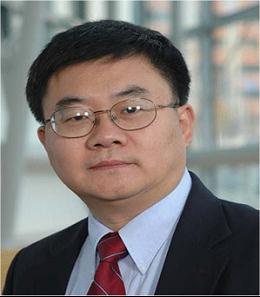 Dr. Wei Sun (Ph.D. in Mechanical Engineering, 1992, Drexel University), is currently appointed as Albert Soffa Chair Professor of Mechanical Engineering at Drexel University, USA, and National "Thousand-Talent" Distinguished Professor and Director of Biomanufacturing Research Center at Tsinghua University, China. His research has been on Biofabrication, 3D Bio-Printing, Computer-Aided Tissue Engineering, and Additive Manufacturing. He has received research funding from National Science Foundation (NSF), Defense Advanced Research Projects Agency (DARPA), National Aeronautics and Space Administration (NASA), Chinese Natural Science Foundation (CNSF) and Chinese Ministry of Science and Technology (MOST). He is currently serving Editor-in-Chief for journal Biofabrication, and served as Founding President for International Society of Biofabrication.
Dr. Wei Sun (Ph.D. in Mechanical Engineering, 1992, Drexel University), is currently appointed as Albert Soffa Chair Professor of Mechanical Engineering at Drexel University, USA, and National "Thousand-Talent" Distinguished Professor and Director of Biomanufacturing Research Center at Tsinghua University, China. His research has been on Biofabrication, 3D Bio-Printing, Computer-Aided Tissue Engineering, and Additive Manufacturing. He has received research funding from National Science Foundation (NSF), Defense Advanced Research Projects Agency (DARPA), National Aeronautics and Space Administration (NASA), Chinese Natural Science Foundation (CNSF) and Chinese Ministry of Science and Technology (MOST). He is currently serving Editor-in-Chief for journal Biofabrication, and served as Founding President for International Society of Biofabrication.
¡¡
Day 1 Afternoon
¡¡
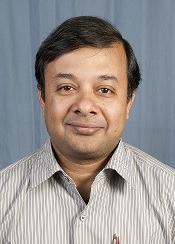 Amit
Bandyopadhyay received his BS in Metallurgical Engineering from Jadavpur
University in 1989 (Kolkata, India), MS in Metallurgy from the Indian
Institute of Science in 1992 (Bangalore, India) and Ph.D. in Materials
Science and Engineering from the University of Texas at Arlington in 1995.
He joined the Center for Ceramics Research at Rutgers University for his
post-doctoral training in 1995. In 1997, he joined the School of Mechanical
and Materials Engineering (MME) at WSU as an Assistant Professor and
promoted to an Associate level in 2001 and to the full professor level in
2006. Prof. Bandyopadhyay¡¯s research expertise lies with additive
manufacturing of metallic and ceramic materials and their composites towards
structural, bio- and piezoelectric materials. Prof. Bandyopadhyay published
over 250 technical papers and holds 12 US patents. He has also edited 8
books. His research papers have been cited over 7200 times by various
research groups and his current ¡°h¡± index is 47. Prof. Bandyopadhyay
received the CAREER award from the US National Science Foundation and the
Young Investigator Program (YIP) Award from the US Office of Naval Research.
Prof. Bandyopadhyay is a Fellow of the American Ceramic Society (ACerS),
American Society for Materials (ASM International), American Institute for
Medical and Biological Engineering (AIMBE), American Association for the
Advancement of Science (AAAS) and National Academy of Inventors (NAI).
Amit
Bandyopadhyay received his BS in Metallurgical Engineering from Jadavpur
University in 1989 (Kolkata, India), MS in Metallurgy from the Indian
Institute of Science in 1992 (Bangalore, India) and Ph.D. in Materials
Science and Engineering from the University of Texas at Arlington in 1995.
He joined the Center for Ceramics Research at Rutgers University for his
post-doctoral training in 1995. In 1997, he joined the School of Mechanical
and Materials Engineering (MME) at WSU as an Assistant Professor and
promoted to an Associate level in 2001 and to the full professor level in
2006. Prof. Bandyopadhyay¡¯s research expertise lies with additive
manufacturing of metallic and ceramic materials and their composites towards
structural, bio- and piezoelectric materials. Prof. Bandyopadhyay published
over 250 technical papers and holds 12 US patents. He has also edited 8
books. His research papers have been cited over 7200 times by various
research groups and his current ¡°h¡± index is 47. Prof. Bandyopadhyay
received the CAREER award from the US National Science Foundation and the
Young Investigator Program (YIP) Award from the US Office of Naval Research.
Prof. Bandyopadhyay is a Fellow of the American Ceramic Society (ACerS),
American Society for Materials (ASM International), American Institute for
Medical and Biological Engineering (AIMBE), American Association for the
Advancement of Science (AAAS) and National Academy of Inventors (NAI).
 Dr.
Shaochen Chen is a Professor and Vice Chair in the NanoEngineering
Departmentat the University of California, San Diego (UCSD). He is a
founding co-director of the Biomaterials and Tissue Engineering Center at
UCSD. Before joining UCSD, Dr. Chen had been a Professor and a Pearlie D.
Henderson Centennial Endowed Faculty Fellow in Engineering at the University
of Texas at Austin from 2001 to 2010. Between 2008 and 2010, he served as
the Program Director for the Nanomanufacturing Program of NSF. Dr. Chen¡¯s
primary research interests include: biomaterials and 3D bioprinting, stem
cell and regenerative medicine, tissue engineering, laser and
nanomanufacturing. He has published over 100 papers in top journals and 12
book/book chapters. Among his numerous awards, Dr. Chen received the NSF
CAREER award,ONR Young Investigator award, and NIH Edward Nagy New
Investigator Award. Dr. Chen is a Fellow of AAAS, AIMBE, ASME, SPIE, and
ISNM.
Dr.
Shaochen Chen is a Professor and Vice Chair in the NanoEngineering
Departmentat the University of California, San Diego (UCSD). He is a
founding co-director of the Biomaterials and Tissue Engineering Center at
UCSD. Before joining UCSD, Dr. Chen had been a Professor and a Pearlie D.
Henderson Centennial Endowed Faculty Fellow in Engineering at the University
of Texas at Austin from 2001 to 2010. Between 2008 and 2010, he served as
the Program Director for the Nanomanufacturing Program of NSF. Dr. Chen¡¯s
primary research interests include: biomaterials and 3D bioprinting, stem
cell and regenerative medicine, tissue engineering, laser and
nanomanufacturing. He has published over 100 papers in top journals and 12
book/book chapters. Among his numerous awards, Dr. Chen received the NSF
CAREER award,ONR Young Investigator award, and NIH Edward Nagy New
Investigator Award. Dr. Chen is a Fellow of AAAS, AIMBE, ASME, SPIE, and
ISNM.
 Dr.
John P. Fisher is the Robert E. Fischell Professor and Chair in the Fischell
Department of Bioengineering at the University of Maryland. Dr. Fisher is
the Director of the Tissue Engineering and Biomaterials Laboratory and
investigates biomaterials, 3D printing, stem cells, and bioreactors for the
regeneration of lost tissues, particularly bone, cartilage, vasculature, and
skeletal muscle. The lab examines questions related to how biomaterials
affect endogenous signaling among embedded cells as well as the interactions
between stem cells and host vascularization. Key recent developments include
the creation of a modular and scalable bioreactor for cell and tissue
culture as well as the fabrication of 3D printed substrates for tissue
regeneration. The lab is supported by research grants from NIH, FDA, NSF,
NIST, DoD, and other institutions, and has authored over 115 publications,
250 scientific presentations, and 13 patents / patent applications. Dr.
Fisher has advised 5 postdoctoral fellows, 17 Ph.D. students, 6 M.S.
students, and over 60 undergraduate researchers. In 2012 Dr. Fisher was
elected Fellow of the American Institute for Medical and Biological
Engineering. In 2015 Dr. Fisher visited the National University of Ireland,
Galway as a Fulbright Fellow. Dr. Fisher is currently the Editor-in-Chief of
the journal Tissue Engineering, Part B: Reviews, and Continental Chair Elect
of the Tissue Engineering and Regenerative Medicine Society International -
Americas Chapter.
Dr.
John P. Fisher is the Robert E. Fischell Professor and Chair in the Fischell
Department of Bioengineering at the University of Maryland. Dr. Fisher is
the Director of the Tissue Engineering and Biomaterials Laboratory and
investigates biomaterials, 3D printing, stem cells, and bioreactors for the
regeneration of lost tissues, particularly bone, cartilage, vasculature, and
skeletal muscle. The lab examines questions related to how biomaterials
affect endogenous signaling among embedded cells as well as the interactions
between stem cells and host vascularization. Key recent developments include
the creation of a modular and scalable bioreactor for cell and tissue
culture as well as the fabrication of 3D printed substrates for tissue
regeneration. The lab is supported by research grants from NIH, FDA, NSF,
NIST, DoD, and other institutions, and has authored over 115 publications,
250 scientific presentations, and 13 patents / patent applications. Dr.
Fisher has advised 5 postdoctoral fellows, 17 Ph.D. students, 6 M.S.
students, and over 60 undergraduate researchers. In 2012 Dr. Fisher was
elected Fellow of the American Institute for Medical and Biological
Engineering. In 2015 Dr. Fisher visited the National University of Ireland,
Galway as a Fulbright Fellow. Dr. Fisher is currently the Editor-in-Chief of
the journal Tissue Engineering, Part B: Reviews, and Continental Chair Elect
of the Tissue Engineering and Regenerative Medicine Society International -
Americas Chapter.
 Dr.
Ola L. A. Harrysson joined the ISE Department at North Carolina State
University in Raleigh, North Carolina in 2002 after receiving his Ph.D. in
Industrial Engineering from the University of Central Florida in Orlando,
Florida. Prior to attending the University of Central Florida he was born
and raised in Sweden and received his bachelor¡¯s degree in Mechanical
Engineering from Dala University. He has been conducting research in Rapid
Prototyping and Additive Manufacturing for over 15 years. His main areas of
research are medical application of additive manufacturing technologies,
custom design and fabrication of orthopedic implants, medical device
development, and materials development for Direct Metal Additive
Manufacturing technology. Dr. Harrysson is the Co-Director of the Center for
Additive Manufacturing and Logistics at NC State University. The Center
houses a number of polymer and metal additive manufacturing technologies.
Dr. Harrysson is currently a full professor in the Fitts Department of
Industrial and Systems Engineering at NC State University and a Fitts
Faculty Fellow in Biomedical Manufacturing.
Dr.
Ola L. A. Harrysson joined the ISE Department at North Carolina State
University in Raleigh, North Carolina in 2002 after receiving his Ph.D. in
Industrial Engineering from the University of Central Florida in Orlando,
Florida. Prior to attending the University of Central Florida he was born
and raised in Sweden and received his bachelor¡¯s degree in Mechanical
Engineering from Dala University. He has been conducting research in Rapid
Prototyping and Additive Manufacturing for over 15 years. His main areas of
research are medical application of additive manufacturing technologies,
custom design and fabrication of orthopedic implants, medical device
development, and materials development for Direct Metal Additive
Manufacturing technology. Dr. Harrysson is the Co-Director of the Center for
Additive Manufacturing and Logistics at NC State University. The Center
houses a number of polymer and metal additive manufacturing technologies.
Dr. Harrysson is currently a full professor in the Fitts Department of
Industrial and Systems Engineering at NC State University and a Fitts
Faculty Fellow in Biomedical Manufacturing.
 Dr.
Ringeisen is Head of the Bioenergy and Biofabrication Section at the U.S.
Naval Research Laboratory (NRL). Dr. Ringeisen graduated with a B.S. in
chemistry from Wake Forest University in 1994. He then entered graduate
school at the University of Wisconsin¡ªMadison to study gas scattering and
reactivity at liquid surfaces. He graduated with a PhD in Physical Chemistry
in 2000. He then went to NRL for a two year postdoctoral associateship in
the Materials Division to study laser deposition of biomaterials. During
this postdoctoral position, Dr. Ringeisen performed the first successful
laser induced forward transfer printing experiment on a living cell. He was
hired as a research chemist at NRL in 2002 and currently maintains an eleven
member research group. He holds 12 patents, has published over 60
peer-reviewed research publications and has received research funding from
the Department of Energy, the Defense Threat Reduction Agency, the Defense
Advanced Research Program Agency, the U.S. Bureau of Engraving and Printing,
the Air Force Office of Scientific Research, the Office of Naval Research
and the Naval Research Laboratory. His Section focuses on research that cuts
across multiple disciplines including materials science, bioengineering,
surface chemistry, micro- and molecular biology and environmental science.
Our current projects include bioprospecting for energy-relevant
microorganisms, microbial fuel cells, layer-by-layer fabrication of 3D
tissue constructs for in vitro testing, biofuels and nanocatalysis.
Dr.
Ringeisen is Head of the Bioenergy and Biofabrication Section at the U.S.
Naval Research Laboratory (NRL). Dr. Ringeisen graduated with a B.S. in
chemistry from Wake Forest University in 1994. He then entered graduate
school at the University of Wisconsin¡ªMadison to study gas scattering and
reactivity at liquid surfaces. He graduated with a PhD in Physical Chemistry
in 2000. He then went to NRL for a two year postdoctoral associateship in
the Materials Division to study laser deposition of biomaterials. During
this postdoctoral position, Dr. Ringeisen performed the first successful
laser induced forward transfer printing experiment on a living cell. He was
hired as a research chemist at NRL in 2002 and currently maintains an eleven
member research group. He holds 12 patents, has published over 60
peer-reviewed research publications and has received research funding from
the Department of Energy, the Defense Threat Reduction Agency, the Defense
Advanced Research Program Agency, the U.S. Bureau of Engraving and Printing,
the Air Force Office of Scientific Research, the Office of Naval Research
and the Naval Research Laboratory. His Section focuses on research that cuts
across multiple disciplines including materials science, bioengineering,
surface chemistry, micro- and molecular biology and environmental science.
Our current projects include bioprospecting for energy-relevant
microorganisms, microbial fuel cells, layer-by-layer fabrication of 3D
tissue constructs for in vitro testing, biofuels and nanocatalysis.
 Dr.
Albert Shih is Professor in Mechanical Engineering, Biomedical Engineering,
and Integrative Systems and Design (ISD) at the University of Michigan. He
is the Associate Chair of ISD and Director of the Global Automotive and
Manufacturing Engineering Program. He was a manufacturing process
development engineer, specialized in advanced grinding, from 1991 to 1998,
at Cummins Inc. Dr. Shih¡¯s research area is design and manufacturing. He is
a pioneer in biomedical manufacturing, the application of manufacturing
technologies to advance the safety, quality, efficiency and speed of
healthcare service and biomedical science. He has 9 US patents, a textbook
in Machining and Machine Tools, and authored or co-authored over 180
archival journal papers, 90 conference papers in manufacturing and
biomedical sciences. Dr. Shih is the Chair of Scientific Committee of the
North American Manufacturing Research Institution of the Society of
Manufacturing Engineers (NAMRI/SME). He is the recipient of many awards
including the Fulbright Scholar, ASME Milton Shaw Manufacturing Research
Medal, Society of Automotive Engineers Ralph R. Teetor Educational Award,
and Best Paper awards in ASME International Manufacturing Science and
Engineering Conference (MSEC), North American Manufacturing Research
Conference (NAMRC),International Conference on Frontiers of Design and
Manufacturing (ICFDM) and several other manufacturing and healthcare
conferences. Dr. Shih is Fellow of both ASME and SME and associate member of
CIRP.
Dr.
Albert Shih is Professor in Mechanical Engineering, Biomedical Engineering,
and Integrative Systems and Design (ISD) at the University of Michigan. He
is the Associate Chair of ISD and Director of the Global Automotive and
Manufacturing Engineering Program. He was a manufacturing process
development engineer, specialized in advanced grinding, from 1991 to 1998,
at Cummins Inc. Dr. Shih¡¯s research area is design and manufacturing. He is
a pioneer in biomedical manufacturing, the application of manufacturing
technologies to advance the safety, quality, efficiency and speed of
healthcare service and biomedical science. He has 9 US patents, a textbook
in Machining and Machine Tools, and authored or co-authored over 180
archival journal papers, 90 conference papers in manufacturing and
biomedical sciences. Dr. Shih is the Chair of Scientific Committee of the
North American Manufacturing Research Institution of the Society of
Manufacturing Engineers (NAMRI/SME). He is the recipient of many awards
including the Fulbright Scholar, ASME Milton Shaw Manufacturing Research
Medal, Society of Automotive Engineers Ralph R. Teetor Educational Award,
and Best Paper awards in ASME International Manufacturing Science and
Engineering Conference (MSEC), North American Manufacturing Research
Conference (NAMRC),International Conference on Frontiers of Design and
Manufacturing (ICFDM) and several other manufacturing and healthcare
conferences. Dr. Shih is Fellow of both ASME and SME and associate member of
CIRP.
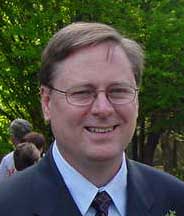 Dr.
David B. Wallace is currently Vice President of MicroFab Technologies, Inc.
He has 35 years of industrial experience in complex fluid flow phenomena,
including 30 years in ink jet printing. He has authored over 80 publications
and has been awarded 28 patents; received his BSE and MSME from Southern
Methodist University and a Ph.D. from the University of Texas at Arlington;
is a licensed Professional Engineer; is an Adjunct Faculty member of the
Joint Biomedical Engineering Program of the University of Texas
(Southwestern, Arlington, and Dallas); is a member of the Industrial
Advisory Board for the ME Program at UT Dallas and the BE Program at UT
Arlington; is an ad hoc reviewer for several technical societies; and is an
ASME fellow.
Dr.
David B. Wallace is currently Vice President of MicroFab Technologies, Inc.
He has 35 years of industrial experience in complex fluid flow phenomena,
including 30 years in ink jet printing. He has authored over 80 publications
and has been awarded 28 patents; received his BSE and MSME from Southern
Methodist University and a Ph.D. from the University of Texas at Arlington;
is a licensed Professional Engineer; is an Adjunct Faculty member of the
Joint Biomedical Engineering Program of the University of Texas
(Southwestern, Arlington, and Dallas); is a member of the Industrial
Advisory Board for the ME Program at UT Dallas and the BE Program at UT
Arlington; is an ad hoc reviewer for several technical societies; and is an
ASME fellow.
 Dr.
Michael J. Yaszemski is the John and Posy Krehbiel Endowed Professor of
Orthopedic Surgery and Biomedical Engineering at the Mayo Clinic and
director of its Polymeric Biomaterials and Tissue Engineering Laboratory. He
is a retired U.S. Air Force Brigadier General and served in the office of
the Air Force Surgeon General and the office of the President of the
Uniformed Services University of the Health Sciences prior to retiring in
2013. He just completed term as president of the Mayo Clinic medical staff,
and had served for 10 years as the Chair of the Spine Surgery Division at
Mayo prior to entering the presidential line. He received both Bachelor¡¯s
and Master¡¯s degrees in Chemical Engineering from Lehigh University in 1977
and 1978, an M.D. from Georgetown University in 1983 and a Ph.D. in Chemical
Engineering from the Massachusetts Institute of Technology in 1995. He
organized and served as the first chair of the Musculoskeletal Tissue
Engineering study section at NIH, and has recently completed a term of
service on the Advisory Council of the National Institute of Biomedical
Imaging and Bioengineering. He served as Chair of the FDA Center for Devices
and Radiologic Health Advisory Committee, and is currently a member of the
FDA Science Board. He is a member of the Lehigh University Board of
Trustees. His research interests are in the synthesis and characterization
of novel degradable polymers for use in bone regeneration, cartilage
regeneration, nervous tissue regeneration, and controlled delivery of
chemotherapeutic agents to musculoskeletal tumors.
Dr.
Michael J. Yaszemski is the John and Posy Krehbiel Endowed Professor of
Orthopedic Surgery and Biomedical Engineering at the Mayo Clinic and
director of its Polymeric Biomaterials and Tissue Engineering Laboratory. He
is a retired U.S. Air Force Brigadier General and served in the office of
the Air Force Surgeon General and the office of the President of the
Uniformed Services University of the Health Sciences prior to retiring in
2013. He just completed term as president of the Mayo Clinic medical staff,
and had served for 10 years as the Chair of the Spine Surgery Division at
Mayo prior to entering the presidential line. He received both Bachelor¡¯s
and Master¡¯s degrees in Chemical Engineering from Lehigh University in 1977
and 1978, an M.D. from Georgetown University in 1983 and a Ph.D. in Chemical
Engineering from the Massachusetts Institute of Technology in 1995. He
organized and served as the first chair of the Musculoskeletal Tissue
Engineering study section at NIH, and has recently completed a term of
service on the Advisory Council of the National Institute of Biomedical
Imaging and Bioengineering. He served as Chair of the FDA Center for Devices
and Radiologic Health Advisory Committee, and is currently a member of the
FDA Science Board. He is a member of the Lehigh University Board of
Trustees. His research interests are in the synthesis and characterization
of novel degradable polymers for use in bone regeneration, cartilage
regeneration, nervous tissue regeneration, and controlled delivery of
chemotherapeutic agents to musculoskeletal tumors.
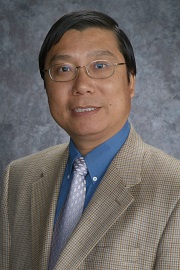 Dr.
Kaiming Ye is Professor and Department Chair of Biomedical Engineering at
the Binghamton University, State University of New York (SUNY). He was
Program Director at NSF before his joining to Binghamton University. He is
one of the top most distinguished and accomplished leaders in the field of
Medical and Biological Engineering. He is Fellow of the American Institute
of Medical and Biological Engineering (AIMBE) and Senior Member of IEEE. His
research interests include 3D bioprinting, advanced biomanufacturing, stem
cell engineering, regenerative medicine, imaging and vaccine development. He
is best known for his creative works in 3D differentiation of human
pluripotent stem cells into clinically relevant cell lineages and
development of fluorescent nanosensors for continuous glucose monitoring.
His research has been continuously supported by NIH, NSF, JDRF, ABI and
industries funding. He has chaired and co-chaired a number of international
conferences and has been invited to deliver keynote/plenary speech in
numerous international and national conferences. He serves as
Editor-in-Chief, Executive Editor, Associate Editor, and member of Editorial
Boards of 13 journals.
Dr.
Kaiming Ye is Professor and Department Chair of Biomedical Engineering at
the Binghamton University, State University of New York (SUNY). He was
Program Director at NSF before his joining to Binghamton University. He is
one of the top most distinguished and accomplished leaders in the field of
Medical and Biological Engineering. He is Fellow of the American Institute
of Medical and Biological Engineering (AIMBE) and Senior Member of IEEE. His
research interests include 3D bioprinting, advanced biomanufacturing, stem
cell engineering, regenerative medicine, imaging and vaccine development. He
is best known for his creative works in 3D differentiation of human
pluripotent stem cells into clinically relevant cell lineages and
development of fluorescent nanosensors for continuous glucose monitoring.
His research has been continuously supported by NIH, NSF, JDRF, ABI and
industries funding. He has chaired and co-chaired a number of international
conferences and has been invited to deliver keynote/plenary speech in
numerous international and national conferences. He serves as
Editor-in-Chief, Executive Editor, Associate Editor, and member of Editorial
Boards of 13 journals.
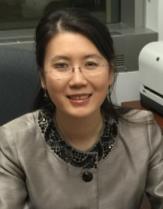 Dr.
Lijie Grace Zhang is an associate professor in the Department of Mechanical
and Aerospace Engineering, Department of Biomedical Engineering and
Department of Medicine at the George Washington University. She obtained her
Ph.D. in Biomedical Engineering at Brown University in 2009. Dr. Zhang
joined GW in 2010, after finishing her postdoctoral training at Rice
University and Harvard Medical School. She is the director of the
Bioengineering Laboratory for Nanomedicine and Tissue Engineering at GW. She
has received the NIH Director¡¯s New Innovator Award, Young Innovator in
Cellular and Molecular Bioengineering, GW SEAS Outstanding Young Researcher
Award, John Haddad Young Investigator Award by American Society for Bone and
Mineral Research, GWU SEAS Faculty Recognition Award, Early Career Award
from the International Journal of Nanomedicine, Ralph E. Powe Junior Faculty
Enhancement Award by the Oak Ridge Associated Universities Organization,
Joukowsky Family Foundation Outstanding Dissertation Award at Brown and the
Sigma Xi Award. Her research interests include nanobiomaterials, 3D
bioprinting, complex tissue engineering, stem cell engineering, drug
delivery and breast cancer bone metastasis. Dr. Zhang has authored 2 books,
over 74 journal papers, book chapters and conference proceedings, 4 patents
and has presented her work on over 190 conferences, university and
institutes.
Dr.
Lijie Grace Zhang is an associate professor in the Department of Mechanical
and Aerospace Engineering, Department of Biomedical Engineering and
Department of Medicine at the George Washington University. She obtained her
Ph.D. in Biomedical Engineering at Brown University in 2009. Dr. Zhang
joined GW in 2010, after finishing her postdoctoral training at Rice
University and Harvard Medical School. She is the director of the
Bioengineering Laboratory for Nanomedicine and Tissue Engineering at GW. She
has received the NIH Director¡¯s New Innovator Award, Young Innovator in
Cellular and Molecular Bioengineering, GW SEAS Outstanding Young Researcher
Award, John Haddad Young Investigator Award by American Society for Bone and
Mineral Research, GWU SEAS Faculty Recognition Award, Early Career Award
from the International Journal of Nanomedicine, Ralph E. Powe Junior Faculty
Enhancement Award by the Oak Ridge Associated Universities Organization,
Joukowsky Family Foundation Outstanding Dissertation Award at Brown and the
Sigma Xi Award. Her research interests include nanobiomaterials, 3D
bioprinting, complex tissue engineering, stem cell engineering, drug
delivery and breast cancer bone metastasis. Dr. Zhang has authored 2 books,
over 74 journal papers, book chapters and conference proceedings, 4 patents
and has presented her work on over 190 conferences, university and
institutes.
¡¡
Day 2 Morning
¡¡
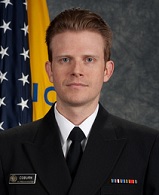 LT
James Coburn is a senior researcher in the FDA¡¯s Center for Devices and
Radiologic Health (CDRH). He began his career in clinically-directed
experimental orthopedic research at Brown University. He then built a
foundation in tissue engineering through a research fellowship with
AbhayPandit at the National University of Ireland, Galway. He is now a
principle investigator of collaborative 3D printing-based interdisciplinary
research projects in the Office of Science and Engineering Laboratories and
a co-chair of the FDA Additive Manufacturing Working Group. His research
strives to incorporate patient-based needs and variability, into medical
device research and development, especially with regard to 3D printing of
innovative medical products.
LT
James Coburn is a senior researcher in the FDA¡¯s Center for Devices and
Radiologic Health (CDRH). He began his career in clinically-directed
experimental orthopedic research at Brown University. He then built a
foundation in tissue engineering through a research fellowship with
AbhayPandit at the National University of Ireland, Galway. He is now a
principle investigator of collaborative 3D printing-based interdisciplinary
research projects in the Office of Science and Engineering Laboratories and
a co-chair of the FDA Additive Manufacturing Working Group. His research
strives to incorporate patient-based needs and variability, into medical
device research and development, especially with regard to 3D printing of
innovative medical products.
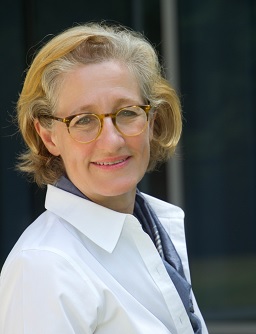 Dr.
Deborah J. Goodings is director of the Division of Civil, Mechanical, and
Manufacturing Innovation in the Directorate for Engineering at the National
Science Foundation. Goodings is detailed to NSF from her position as
Dewberry Chair Professor of Civil Engineering, and Chairman of the
Department of Civil, Environmental, and Infrastructure Engineering at George
Mason University. Before joining George Mason, Goodings held a faculty
appointment in the Department of Civil and Environmental Engineering at the
University of Maryland for nearly 30 years. She was recognized by the
Transportation Research Board with the Fred Burggraf Award; by the
Department of the Army with the Outstanding Civilian Service Medal; by the
U.S. Universities Council on Geotechnical Engineering Research with their
Distinguished Service Award following her service as its President; and an
endowed chair was established in her honor upon her departure from the
University of Maryland. Goodings earned her Bachelor¡¯s degree in Civil
Engineering at the University of Toronto and her Ph.D. in Geotechnical
Engineering at Cambridge University. She is a Fellow of the American Society
of Civil Engineers; a Diplomate, Geotechnical Engineering; and a registered
professional engineer.
Dr.
Deborah J. Goodings is director of the Division of Civil, Mechanical, and
Manufacturing Innovation in the Directorate for Engineering at the National
Science Foundation. Goodings is detailed to NSF from her position as
Dewberry Chair Professor of Civil Engineering, and Chairman of the
Department of Civil, Environmental, and Infrastructure Engineering at George
Mason University. Before joining George Mason, Goodings held a faculty
appointment in the Department of Civil and Environmental Engineering at the
University of Maryland for nearly 30 years. She was recognized by the
Transportation Research Board with the Fred Burggraf Award; by the
Department of the Army with the Outstanding Civilian Service Medal; by the
U.S. Universities Council on Geotechnical Engineering Research with their
Distinguished Service Award following her service as its President; and an
endowed chair was established in her honor upon her departure from the
University of Maryland. Goodings earned her Bachelor¡¯s degree in Civil
Engineering at the University of Toronto and her Ph.D. in Geotechnical
Engineering at Cambridge University. She is a Fellow of the American Society
of Civil Engineers; a Diplomate, Geotechnical Engineering; and a registered
professional engineer.
 Rosemarie
Hunziker, Ph.D. is the Director of the Tissue Engineering/Regenerative
Medicine and Biomaterials Programs at the National Institute of Biomedical
Imaging and Bioengineering (NIBIB) within the National Institutes of Health
(NIH) in the US Department of Health and Human Services (DHHS). In that
capacity she has programmatic oversight of discovery and appliedresearch
grants. Dr. Hunziker brings a diverse background to this broad sphere of
research, including experience in microbiology, immunogenetics and
immunochemistry, developmental biology, animal husbandry, molecular biology,
stem cell technologies, tissue engineering (most recently in the ¡°tissue
chips¡± programs) and regenerative medicine, biomaterials, and technology
transfer. Rosemarie is committed to nurturing discovery science and
realizing the practical benefits of the exciting developments at the
forefront of cell-based tools and therapies.
Rosemarie
Hunziker, Ph.D. is the Director of the Tissue Engineering/Regenerative
Medicine and Biomaterials Programs at the National Institute of Biomedical
Imaging and Bioengineering (NIBIB) within the National Institutes of Health
(NIH) in the US Department of Health and Human Services (DHHS). In that
capacity she has programmatic oversight of discovery and appliedresearch
grants. Dr. Hunziker brings a diverse background to this broad sphere of
research, including experience in microbiology, immunogenetics and
immunochemistry, developmental biology, animal husbandry, molecular biology,
stem cell technologies, tissue engineering (most recently in the ¡°tissue
chips¡± programs) and regenerative medicine, biomaterials, and technology
transfer. Rosemarie is committed to nurturing discovery science and
realizing the practical benefits of the exciting developments at the
forefront of cell-based tools and therapies.
 Carrie
Laurencot, Ph.D. has over 25 years of experience in drug discovery and
development in industry, a contract research organization and the federal
government. Her expertise includes regulatory affairs and clinical
development for anti-cancer therapies, gene and cell therapies,
immunotherapies and military medicine. Currently, Dr. Laurencot is the
Senior Regulatory Affairs Advisor at the U.S. Army Medical Research Materiel
Command where she is responsible for planning, establishing and evaluating
long-range regulatory objectives for major programs and projects as well as
developing new concepts, interpretations, policies, and procedures that
affect medical product development. She collaborates with the FDA senior
leadership on strategic initiatives for military medicine. In addition, she
serves as a regulatory affairs subject matter expert to the Army Surgeon
General¡¯s (TSG) Sponsor¡¯s Representative to the Food and Drug Administration
(FDA), to the commanding General of USAMRMC, the USAMRMC Milestone Decision
Authority, and to the Commander of the U.S. Army Medical Materiel
Development Activity (USAMMDA). She is the primary interface between the
Directors of USAMMDA regulatory elements to include the Division of
Regulated Activities and Compliance (DRAC) and Clinical Services Support
Division (CSSD) and the TSG Sponsor¡¯s Representative to the FDA.
Carrie
Laurencot, Ph.D. has over 25 years of experience in drug discovery and
development in industry, a contract research organization and the federal
government. Her expertise includes regulatory affairs and clinical
development for anti-cancer therapies, gene and cell therapies,
immunotherapies and military medicine. Currently, Dr. Laurencot is the
Senior Regulatory Affairs Advisor at the U.S. Army Medical Research Materiel
Command where she is responsible for planning, establishing and evaluating
long-range regulatory objectives for major programs and projects as well as
developing new concepts, interpretations, policies, and procedures that
affect medical product development. She collaborates with the FDA senior
leadership on strategic initiatives for military medicine. In addition, she
serves as a regulatory affairs subject matter expert to the Army Surgeon
General¡¯s (TSG) Sponsor¡¯s Representative to the Food and Drug Administration
(FDA), to the commanding General of USAMRMC, the USAMRMC Milestone Decision
Authority, and to the Commander of the U.S. Army Medical Materiel
Development Activity (USAMMDA). She is the primary interface between the
Directors of USAMMDA regulatory elements to include the Division of
Regulated Activities and Compliance (DRAC) and Clinical Services Support
Division (CSSD) and the TSG Sponsor¡¯s Representative to the FDA.
 Anne
Plant received a PhD in biochemistry from Baylor College of Medicine and has
been engaged in research in biophysics, predictive models, and quantitative
methods for cell biology. She serves as Chief of the Biosystems and
Biomaterials Division at NIST in the Material Measurements Laboratory. She
has been on detail at the White House Office of Science and Technology
Policy, and is an AIMBE Fellow. NIST is a multidisciplinary organization
that is part of the Department of Commerce and is charged with developing
measurement technologies and standards that support the success of industry.
The Biosystems and Biomaterials Division in collaboration with other
scientists at NIST works with the research and industrial community on
genomic, imaging, and other methodologies and benchmarking methods that
allow rigorous quantification of single cells and cell populations.
Anne
Plant received a PhD in biochemistry from Baylor College of Medicine and has
been engaged in research in biophysics, predictive models, and quantitative
methods for cell biology. She serves as Chief of the Biosystems and
Biomaterials Division at NIST in the Material Measurements Laboratory. She
has been on detail at the White House Office of Science and Technology
Policy, and is an AIMBE Fellow. NIST is a multidisciplinary organization
that is part of the Department of Commerce and is charged with developing
measurement technologies and standards that support the success of industry.
The Biosystems and Biomaterials Division in collaboration with other
scientists at NIST works with the research and industrial community on
genomic, imaging, and other methodologies and benchmarking methods that
allow rigorous quantification of single cells and cell populations.